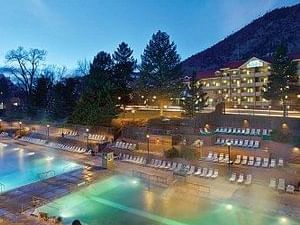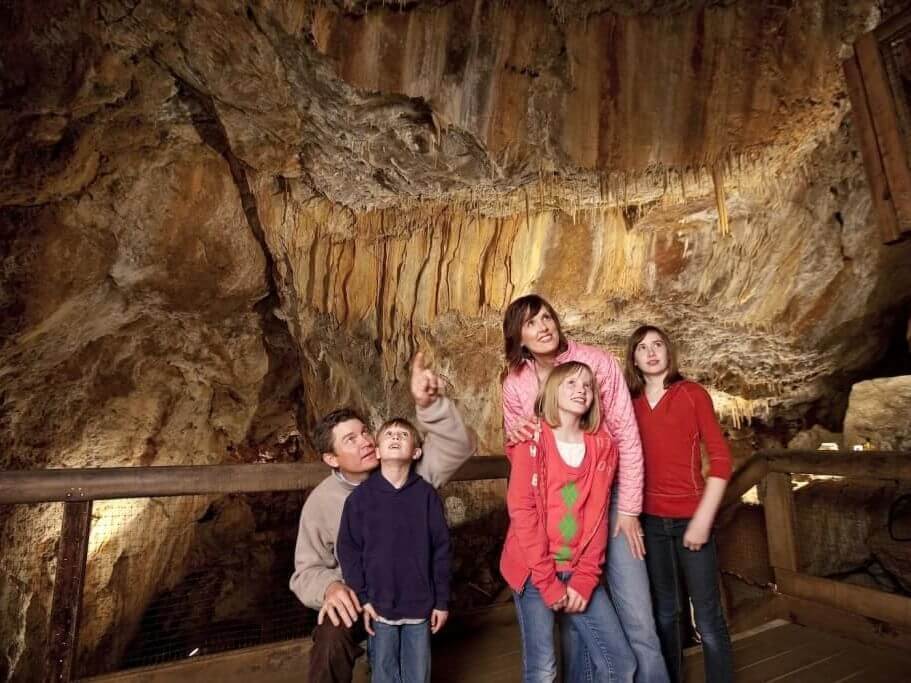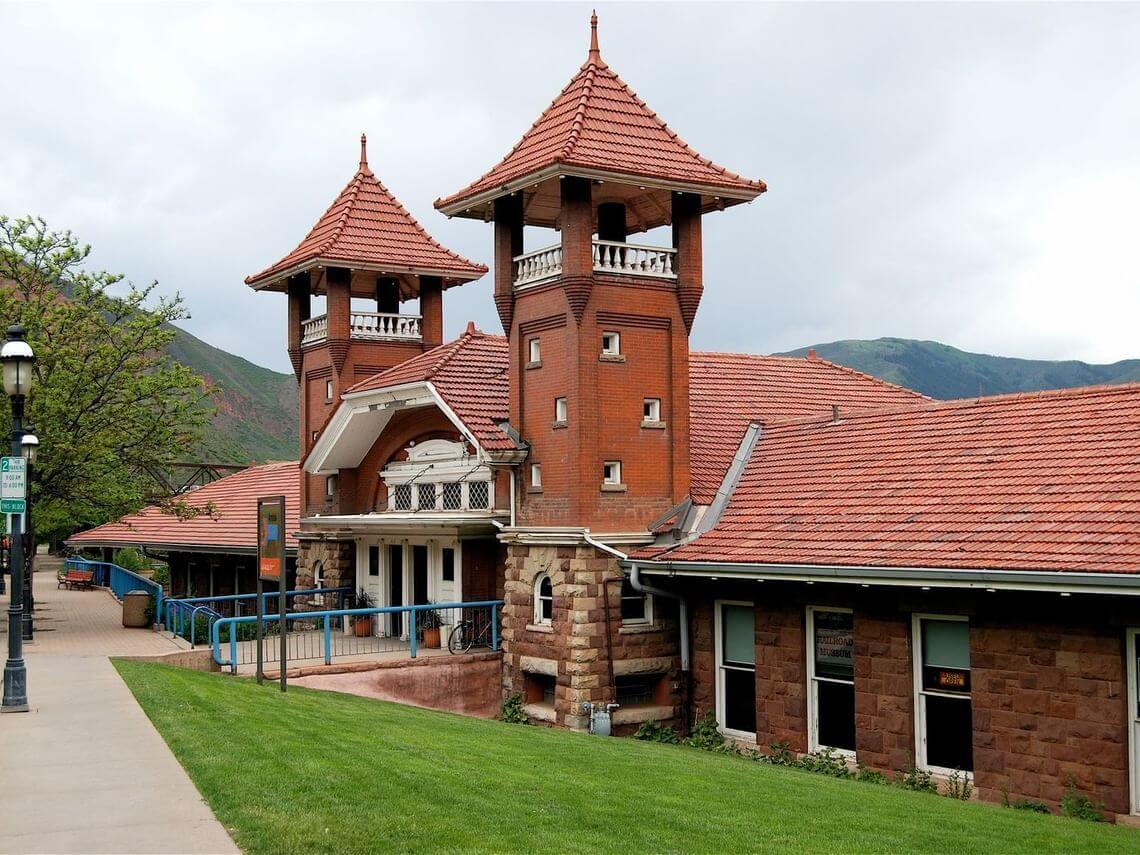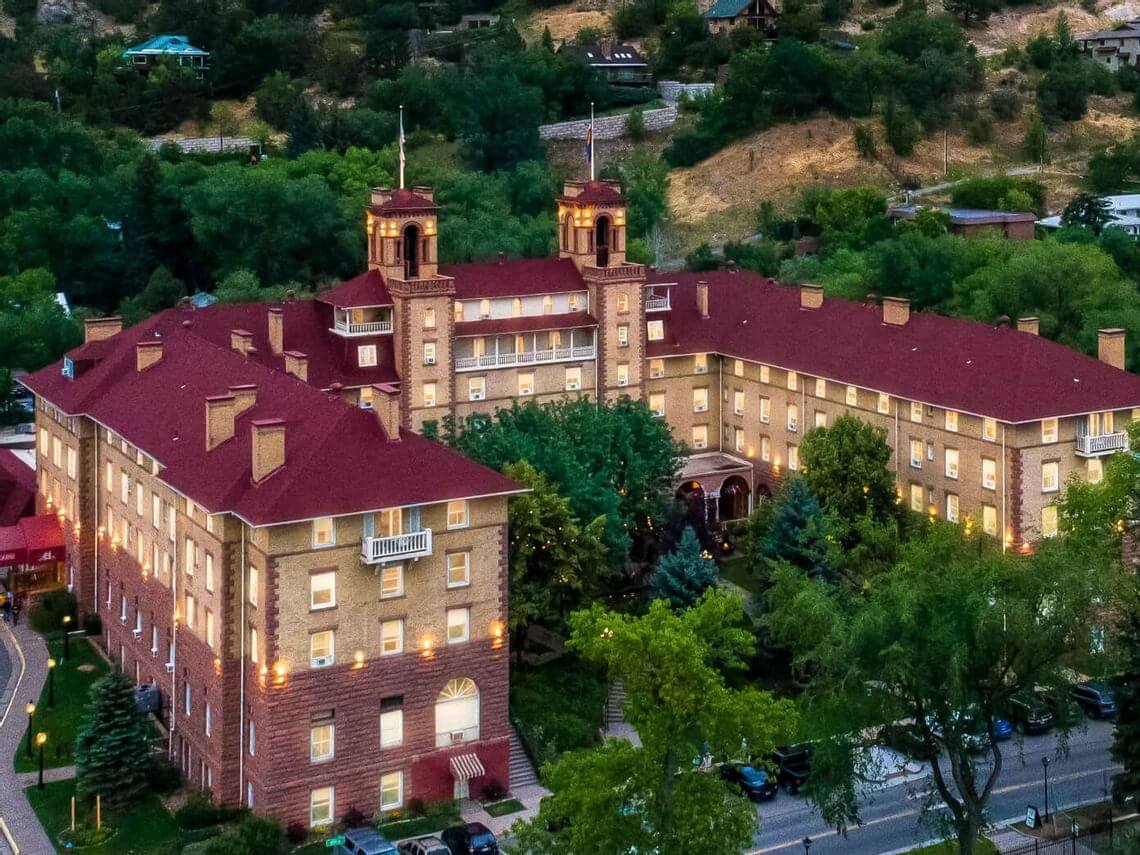







You don’t have to be a history enthusiast to enjoy this fun-filled tour of Glenwood Springs that centers around the town’s major historical sites. By visiting these sites, you’ll not only have a great time, but you’ll also learn a little something about the hot springs town’s colorful past.
Hotel Colorado. The hotel was once the favored lodging of U.S. presidents and celebrities. Teddy Roosevelt multi-tasked when in residence, running the country and enjoying the great outdoors. The“unsinkable” Molly Brown who famously survived the Titanic disaster vacationed here. Both have suites named in their honor. Ever elegant, the hotel retains its historic charms but with the added twist of modern conveniences that ensures guests are comfortable whether convening in the lobby or retiring in their guest room. Rather than politicians and movie stars, today’s Hotel Colorado guests are decidedly more low-key, primarily couples, families, and those traveling with their canine companions.
Glenwood Hot Springs Pool & Yampah Spa and Vapor Caves. Once upon a time at the turn of the 20th Century, Hotel Colorado, Glenwood Hot Springs Pool and the Yampah Vapor Caves were a single property. It was the dream of Walter Devereux, a mining engineer turned silver baron, to create a health resort on par with those of Europe. He envisioned a place where the world’s elite could engage in the good life—soaking in the springs, taking steam baths at the caves, enjoying massage, as well as fine dining and lodging in an exclusive environment. These days, the three properties are separate entities, but combined they continue to offer guests the same legacy of amenities imagined by town founder, Walter Devereux over a century ago.
Historic Train Depot. Theodore von Rosenberg, the architect of the red sandstone bathhouse at Glenwood Hot Springs Pool, also designed the Denver & Rio Grande Depot which opened in 1904. If you look across the river, you can see similarities in style. Even Glenwood’s pedestrian bridge built in 2017 which spans the Colorado River takes its cues from Rosenberg’s style. Still operational, the depot is a regular stop for Amtrak’s California Zephyr, as well as the Rocky Mountaineer, a luxury sightseeing rail.
Fairy Caves. An attorney by trade, Charles W. Darrow was also an avid explorer and entrepreneur. Not only did Darrow open the caves to visitors in 1895, he added electric lighting, a new technology at the time, and marketed the caves as the Eighth Wonder of the World. Despite his efforts, it was financially unsustainable, and the caves closed in 1910. In the 1960s, Pete Prebble bought the property from the Darrow family but it remained private until the current owners purchased it. After extensive renovations, it reopened to the public under the name Glenwood Caverns Adventure Park. To keep visitors entertained while waiting for their cave tours, in 2005, the owners installed the Alpine Coaster, the first toboggan-style ride in the U.S.
Linwood Cemetery. Linwood Cemetery is best known as the final resting place of John “Doc” Holliday. Because the gambler-gunslinger died a pauper, he is interred somewhere in “Potter’s Field,” though visitors can pay their respects to the quick-draw celebrity at his memorial marker. Every October, the ghosts of Glenwood’s past come to life during the Glenwood History Museum’s Ghost Walk. The annual event features professional actors who dress the part and tell the stories of Glenwood’s pioneers.
There’s more… If your schedule allows pop into the Frontier Museum or the Doc Holliday Collection for a glimpse of the past. The Glenwood Vaudeville Revue features a rare 1918 Wurlitzer Photoplayer as well as a hilarious comedy show. And, to see remnants of Glenwood’s mining past take a drive south of town to view the historic coal coking ovens.
Ready to immerse yourself in Glenwood Springs’ history? From its opulent beginnings to its Wild West roots, experience it all starting at Hotel Colorado—where history meets hospitality.
